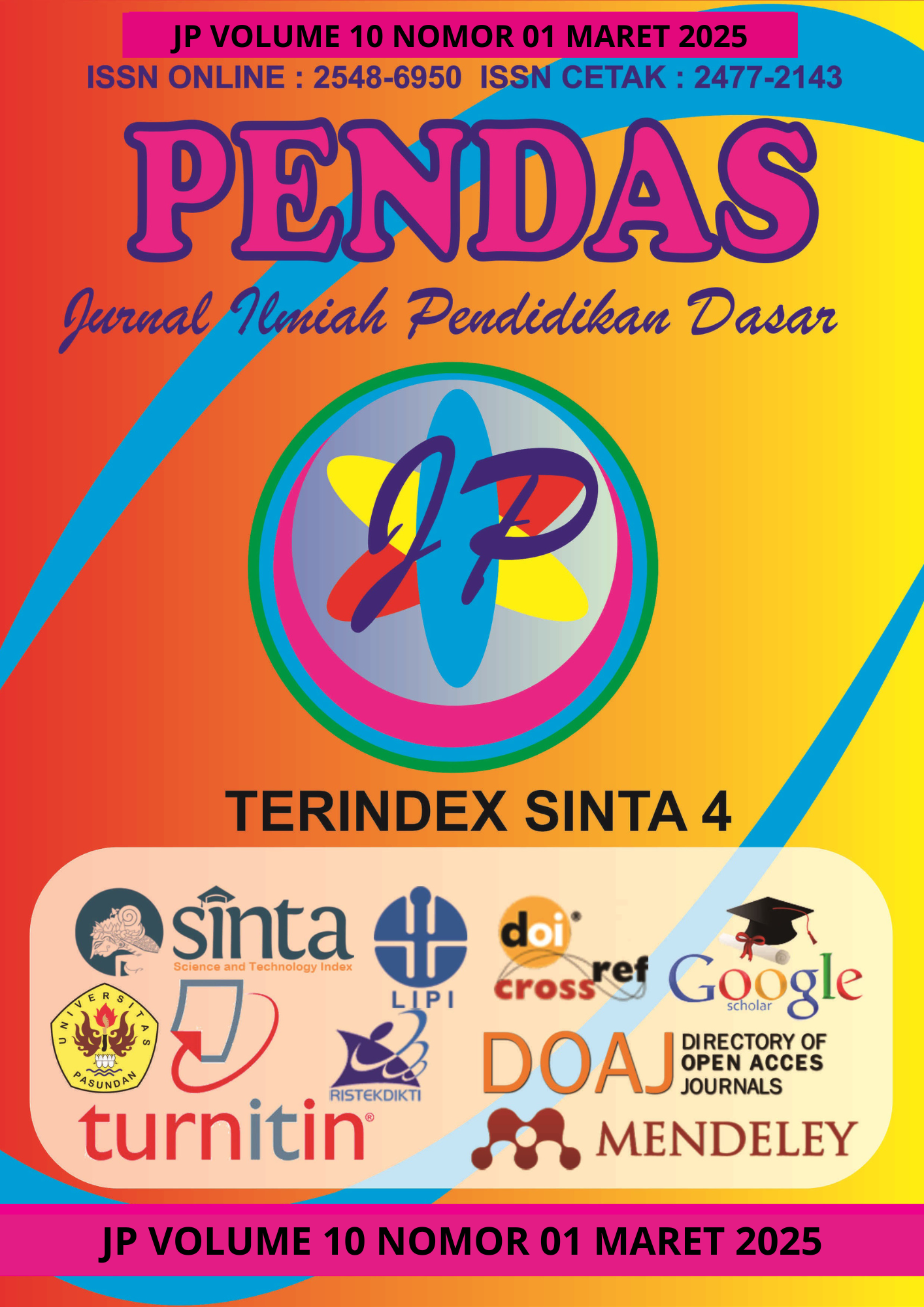PENERAPAN MEDIA FILM “NUSSA DAN RARA” PADA MATA PELAJARAN PENDIDIKAN PANCASILA FASE A DI SDN SUMUR WELUT III/440 SURABAYA
DOI:
https://doi.org/10.23969/jp.v10i01.22409Keywords:
pancasila phase a education subjects, learning film media, cartoon film "nussa and rara"Abstract
The animated film Nussa and Rara is a communication medium in the form of cartoon-style images or more precisely depicted cartoon characters which are very effective in conveying ideas in a unique way to provide inspiration, and also contains Pancasila education material, especially for elementary school students. This research aims to describe the extent to which Phase A teachers and students at SDN Sumur Welut III/440 Surabaya are able to apply the film media "Nussa and Rara" and to determine the feasibility of the film media "Nussa and Rara" which was developed in the Pancasila Education Subject. Phase A. This research uses a qualitative method with a descriptive approach where this approach describes the results of teacher activities and student activities in the Pancasila Education Subject Phase A. The subjects of this research were 1 teacher and 29 students. Data collection techniques in this research used observation, interviews and documentation sourced from purposive sampling techniques. The data analysis technique in this research is through data reduction, data presentation, and drawing conclusions. The validity of this research data is through a credibility test using triangulation techniques.
Downloads
References
Asdianti, S., Khaeruddin, K., & Hambali, H. (2022). Pengaruh Penggunaan Media Pembelajaran Film Animasi Terhadap Hasil Belajar Siswa di Kelas IV SDI Bertingkat Labuang Baji. Indonesian Journal of Social and Educational Studies, 3(1), 40–50. https://doi.org/10.26858/ijses.v3i1.37040
Diandra Izzani Sari. (2017). Pengaruh Pembelajaran Media Visual Terhadap Meningkatnya Minat Belajar Siswa Sekolah Dasar. Angewandte Chemie International Edition, 6(11), 1–10.
Hasan, M., Milawati, Darodjat, Khairani, H., & Tahrim, T. (2021). Media Pembelajaran. In Tahta Media Group.
Hasmira, Anwar, & Yusuf, M. (2017). Penggunaan Media Pembelajaran Video Animasi Untuk Meningkatkan Hasil Belajar PKN Pada Siswa Kelas IV di SD Negeri 1 Ngapa. Jurnal Wahana Kajian Pendidikan IPS, 1(2), 128–137.
Indriyani, I., Ahied, M., & Rosidi, I. (2020). Penerapan Model Pembelajaran Double Loop Problem Solving (Dlps) Terhadap Kemampuan Pemecahan Masalah Siswa Pada Materi Bencana Alam. Jurnal Luminous: Riset Ilmiah Pendidikan Fisika, 1(1), 8. https://doi.org/10.31851/luminous.v1i1.3442
Isran Rasyid Karo-Karo S, R. (2018). Manfaat Media Pembelajaran. 91–96.
Kristanto, A. (2016). Media Pembelajaran. Bintang Surabaya, 1–129.
Mulyani, Z., Mardiana, T., & Triana, P. M. (2022). Analisis Nilai Moral Dalam Serial Animasi Nussa Rara Dan Relevansinya Dengan Pembelajaran Ppkn Di Sekolah Dasar. Khazanah Pendidikan, 16(2), 32. https://doi.org/10.30595/jkp.v16i2.13362
Muning, O. (2019). Film Animasi “Nussa dan Rara Episode Baik Itu Mudah” sebagai Sarana Penanaman Karakter pada Anak Usia Dini. Jurnal Pendidikan Anak, 8(2), 164–171.
Nuraini, T. (2018). Jenis Jenis Media Audio Visual. Gastronomía Ecuatoriana y Turismo Local., 1(69), 5–24.
Prawesti, V. Della, Satianingsih, R., & Tiktok, M. (2024). Application of Tiktok Media in Plant Breeding Material for Class IV Science Learning in Elementary Schools. 76.
Saptyan, G. R. P. (2017). Pemahaman Siswa Sekolah Dasar Kelas Atas Terhadap Kedisiplinan Mentaati Peraturan Tata Tertib SD Negeri Kembang Sari Kabupaten Bantul.
Sholihah. (2019). Penggunaan Media Visual dalam Meningkatkan Minat Belajar Siswa Program Studi Pendidikan Guru Madrasah Ibtidaiyah Jurusan Tarbiyah Fakultas Agama Islam Universitas Muhammadiyah Sidoarjo. 172071200049.
Wulandari, A. P., Salsabila, A. A., Cahyani, K., Nurazizah, T. S., & Ulfiah, Z. (2023). Pentingnya Media Pembelajaran dalam Proses Belajar Mengajar. Journal on Education, 5(2), 3928–3936. https://doi.org/10.31004/joe.v5i2.1074
Downloads
Published
Issue
Section
License
Copyright (c) 2025 Pendas : Jurnal Ilmiah Pendidikan Dasar

This work is licensed under a Creative Commons Attribution 4.0 International License.



















